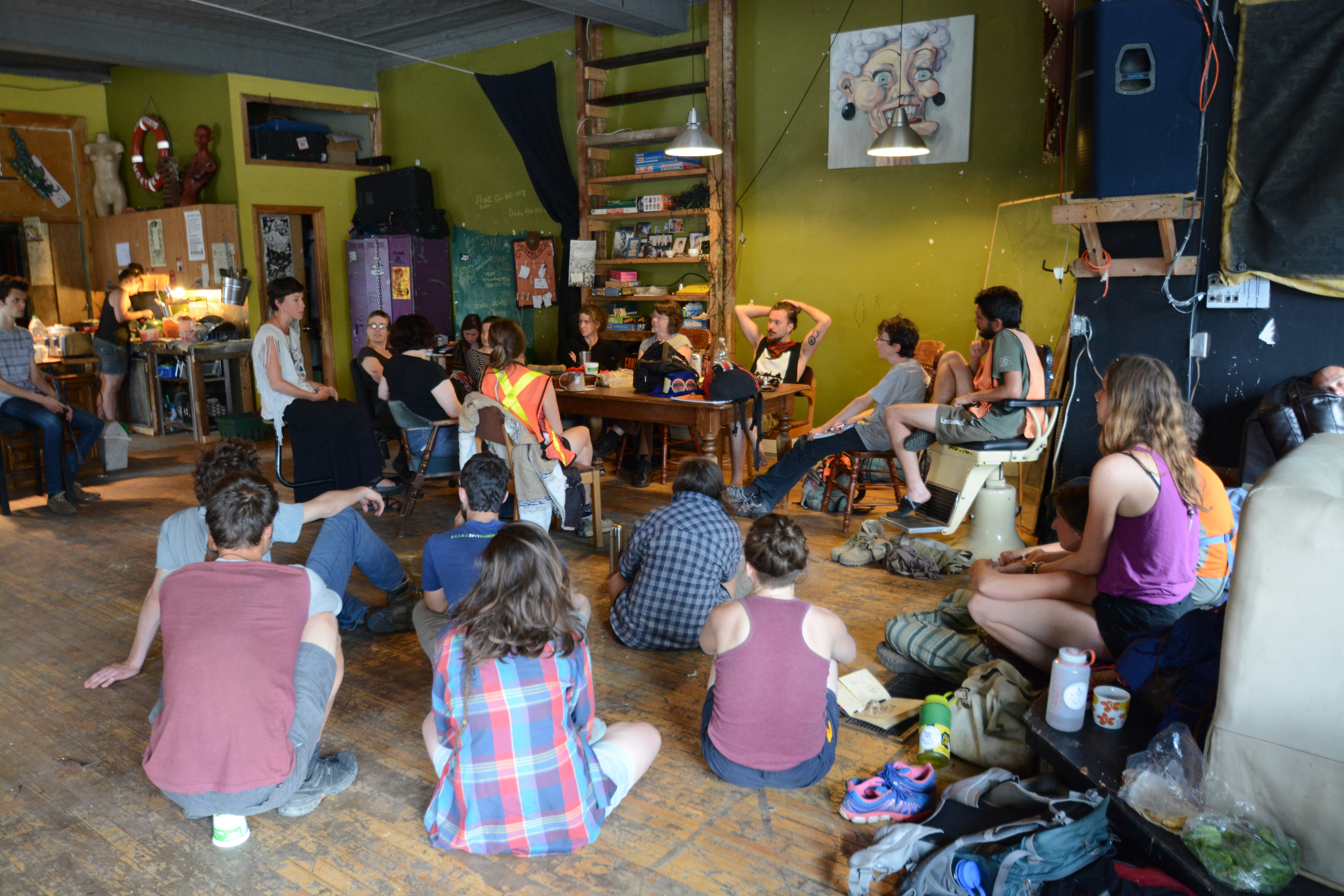June 6: Montreal East – Downtown Montreal
Waking up in the Paroisse St-François-d’Assise after sleeping-in slightly longer than usual, the marchers yesterday appeared to be in a fantastic mood. There was only 15 kilometres to walk — half of the day before — and the destination was Mount Royal, an area known for its progressive population who were likely to be highly sympathetic to the march’s ideas. The sun was shining, and many people were outside, giving the march quite a bit of visibility in a city already filled with activists.
The marchers stopped in Hochelaga on the way to their destination, and vistited L’Achoppe, an apartment building which has been bought room by room by local activists. It is the home of one of the march’s organizers, Alyssa Symons-Belanger, who describes L’Achoppe as being a place where the communal values of the march exist in a permanent setting.
Those who live at L’Achoppe have converted the first floor of their three-floor building into a communal space — the other two being individual apartments — where the group often holds open workshops on self-sufficiency. They have a woodshop, a print-shop, and a home-brewery on the communal floor. The group often puts on shows to raise money for various causes. The group holds meetings at least twice monthly where any decisions which affect the group as a whole are discussed.
Many who stay at L’Achoppe for extended periods of time eventually leave to form similar, self-sufficiency projects elsewhere — one example of many is the Jardins de la Resistance in Monteregie. In this regard, L’Achoppe could be seen as a microcosm of an alternative social structure: one where direct-democracy, self-sufficiency, community and strong principles of justice are the guiding principles rather than individual greed and alienation.
Sadly, the march had to leave after eating lunch. The sun was still shining though, and by the mid-afternoon the streets began to fill with people. It was the beginning of Grand Prix weekend, and the street on which the marchers would soon walk — Mount Royal — was closed to cars due to a sidewalk sale. That street was packed with people, who were handed pamphlets and heard songs by the Chorale du Peuple. Once the march arrived at the location where its members would be sleeping for the next two night, quite a few more people had decided to walk along for a time.
In the evening, the march put on its largest show yet at the Rialto theater in the Mile End section of Montreal. The room was packed; all seats were filled and many were standing.
The show opened with a poem by Marie Brion, a recently-retired woman who has been on the walk since its first day on May 10. The poem, which she wrote in pieces throughout the first weeks of the march, explains why she has decided to resist the pipelines and join the Peoples for Mother Earth. She was followed by the “Stop the Tar Sands Comittee,” an ad-hoc musical group whose performance was recieved by the audience with thunderous applause. The Chorale du Peuple also put on a show, which saw 50-odd people jump on stage and sing along.
Other acts included SLAM poetry by Inuit artist Natasha Kanappe-Fontaine, improv-singing, a comedy sketch by two marchers, bands Berthium Gaudreault, Werken and Kon-Fusion, poetry on the subject of disobedience by Jospehine Bacon, and an extremely powerful speech about Ontario’s “Chemical Valley” by Vanessa Gray — an indigenous activist from the reserve which the the refineries border.
The show finished quite late, but there is little doubt that the marchers will be energized and excited for the large demonstration which will take place on June 7, in the financial district of Montreal.



